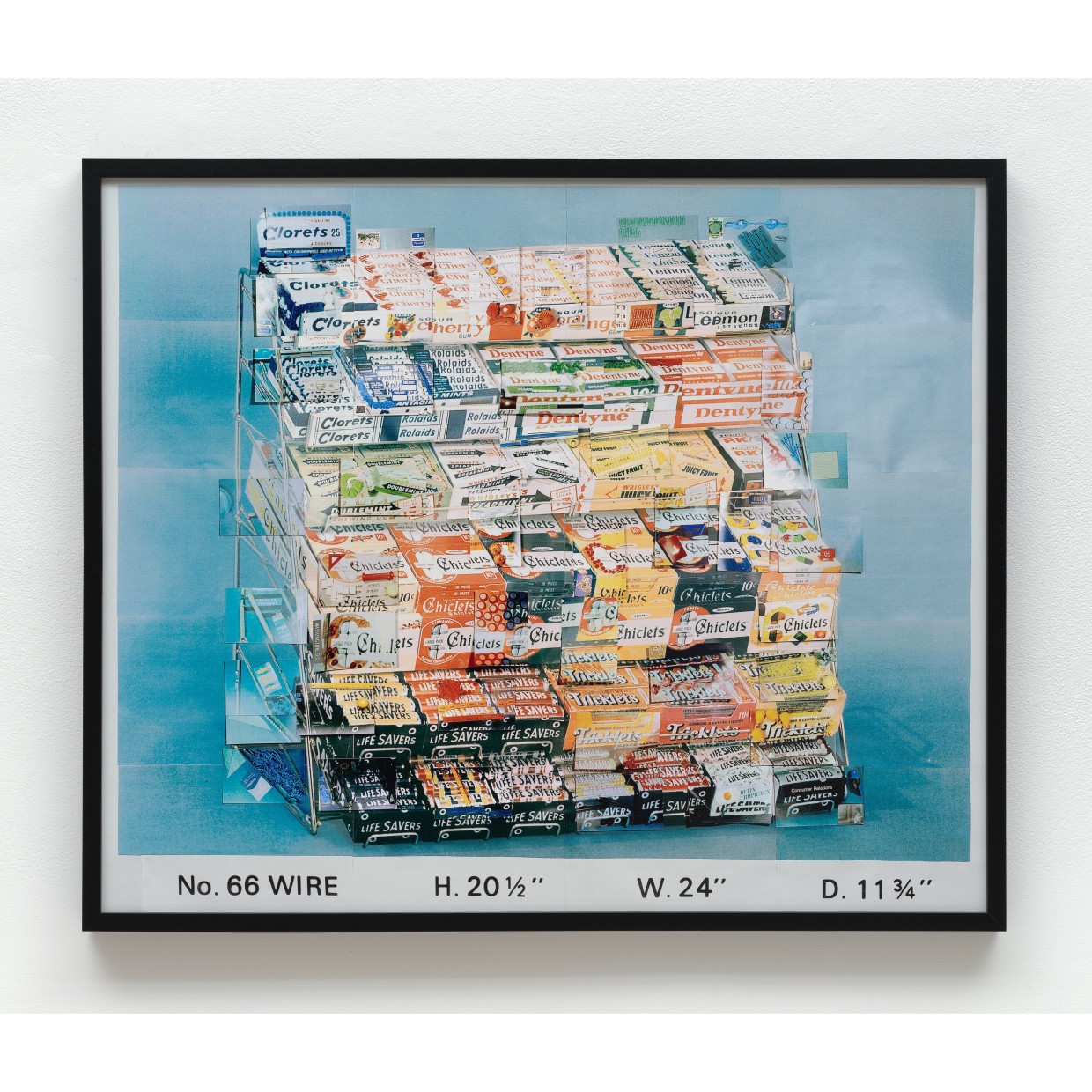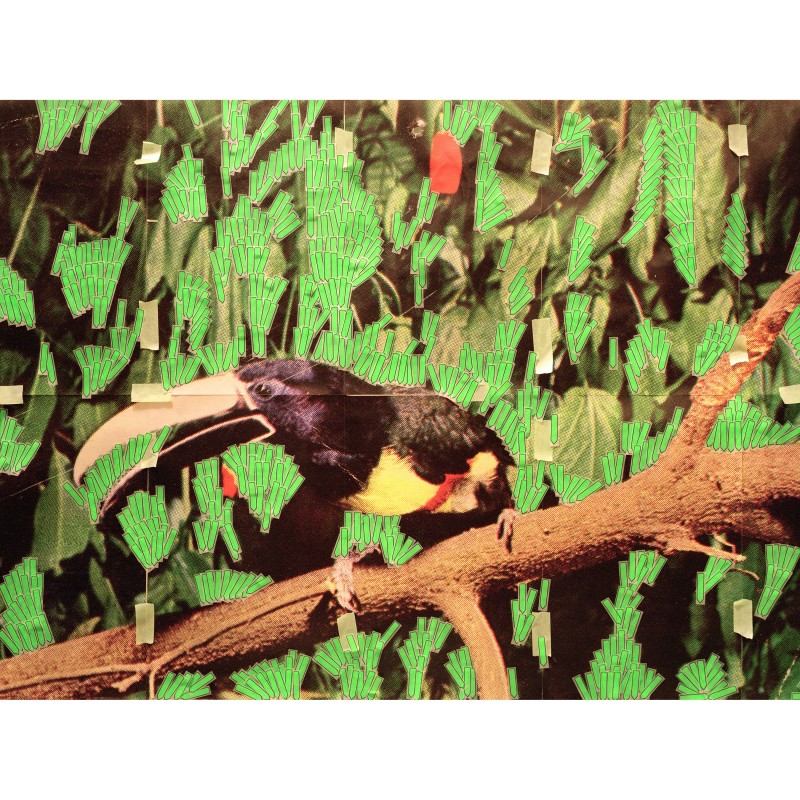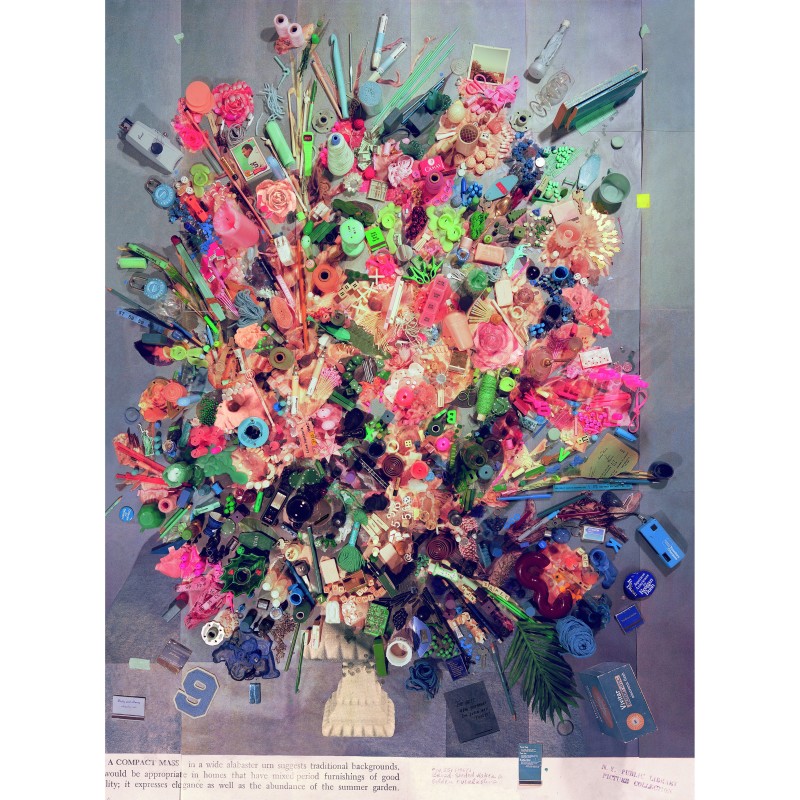
I assemble images from objects and found photographs that court feelings of time passing. Using collage and re-photography, I produce composite images that call to mind old magazine advertisements, postcards, or catalogues. I am interested in dated commercial images; in the failure, with time, of their visual trickery; in the waning of their seductive powers. My work highlights how the once familiar becomes foreign; how the fetishized object can lose its lustre; how glamour can fade.
Flat Death combines sculptural constructions that are photographed, printed, tiled, and re-photographed, together with images from darkroom manuals that are decomposed using a scanner. My process is circular; I start and finish with a photograph, after a journey of intervention and manipulation that ultimately disrupts the smooth surface and the perspective of the stock image. The works impart an uncanny sense of a lost world of images that I have collected and recalibrated to present as evidence that images never die, they just float somewhere between the traditional realm of the analog and the Internet, or between complex emotional attachments and kitsch. (Sara Cwynar)




Using photography, installation, and recycled images, Sara Cwynar focuses on the tension caused by the encounter between photographic techniques and old and new technology. Playing with a “vintage” spirit, she carefully creates series of visual anachronisms in the studio by appropriating found materials—often from flea markets or the Internet—and processing them using the latest technology, scanning, re-photographing, digitally assembling or composing still lifes that mix images and objects. Her manipulations aspire to restore meaning to this obsolete imagery while revealing its banality. She seeks to ”breathe new life into the old by using all possible contemporary means,” she says. In her 2015 Encyclopaedia of Kitsch, she illustrates the function of the concept of kitsch in photography by invoking Baudrillard, Barthes and Kundera. (Stefano Stoll)
This website uses cookies
This site uses cookies to help make it more useful to you. Please contact us to find out more about our Cookie Policy.